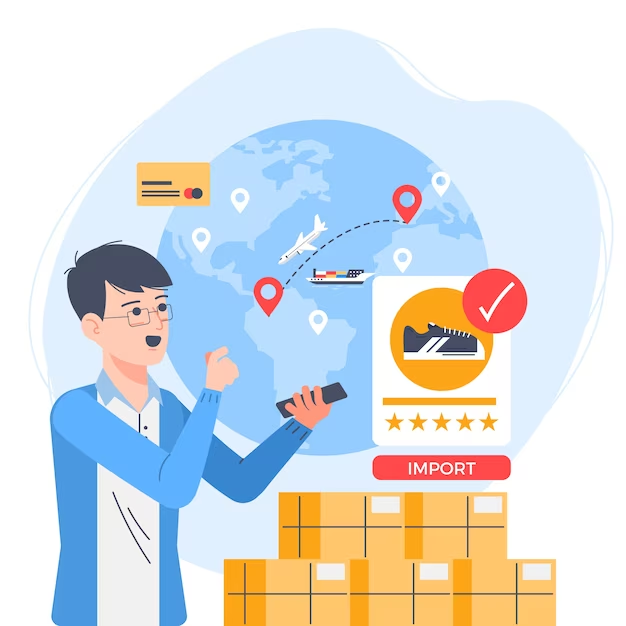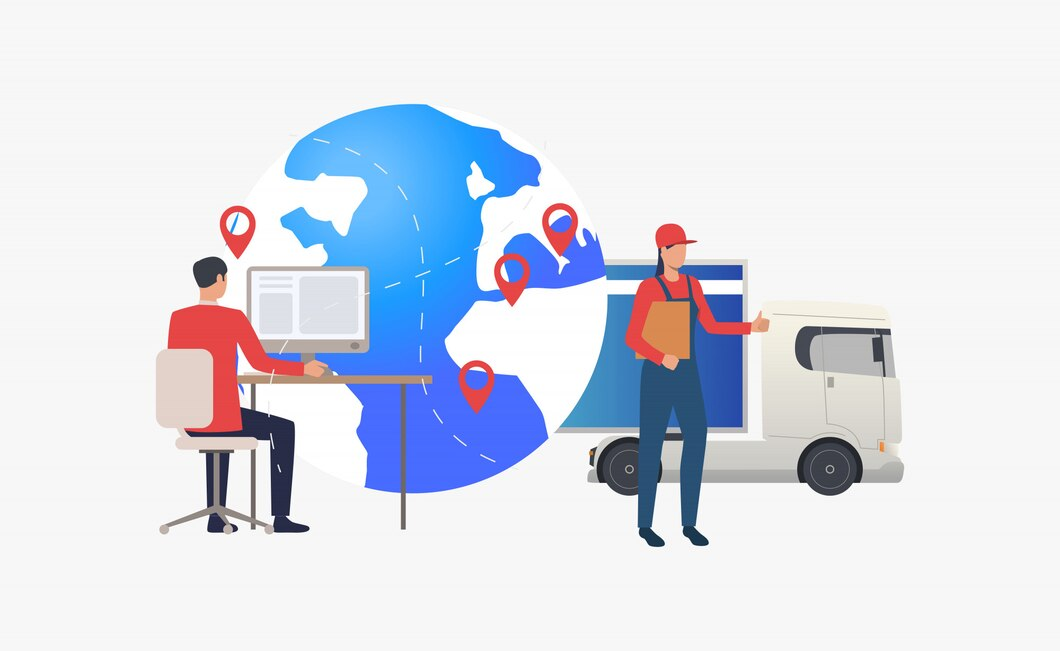Order Fulfillment Checklist: Detailed Guide in 2024
Summer Nguyen | 09-23-2021


The Most Popular Extension Builder for Magento 2
With a big catalog of 224+ extensions for your online store
This comprehensive guide to the Order Fulfillment Checklist in 2024 navigates through the intricacies of managing the end-to-end process, encompassing the latest strategies, best practices, and innovative methodologies adopted by businesses to meet the dynamic demands of the modern marketplace.
Table of Contents
- What is Order Fulfillment?
- Overview of Order Fulfillment Checklist
- How to Handle Order Fulfillment
- Conclusion
What is Order Fulfillment?
Order fulfillment refers to the entire process starting from receiving an order for a product or service until it reaches the customer’s hands. It involves various steps, such as picking, packing, and shipping items to the customer. The process also includes inventory management order processing and often extends to handling returns or exchanges.

Overview of Order Fulfillment Checklist
An order fulfillment checklist is a structured set of steps and tasks designed to guide and ensure the smooth execution of the entire order fulfillment process, from receiving an order to delivering it to the customer. It helps businesses organize, track, and manage each stage of fulfilling customer orders systematically.
Benefits of an Order Fulfillment Checklist
-
Efficiency: It ensures a structured and systematic workflow, reducing errors and improving efficiency in order processing and fulfillment.
-
Accuracy: Verifying orders at multiple stages reduces the likelihood of shipping incorrect items or quantities to customers.
-
Customer Satisfaction: Timely and accurate order fulfillment leads to improved customer satisfaction and retention.
-
Inventory Management: Helps in managing inventory levels effectively, reducing stock outs or overstock situations.
-
Process Optimization: Allows businesses to identify bottlenecks or inefficiencies in the fulfillment process for continual improvement.
-
Cost Savings: Streamlining processes and minimizing errors can lead to reduced operational costs in the long run.
-
Scalability: Provides a structured framework that can be scaled as the business grows, accommodating higher order volumes without compromising quality.

Detailed overview of an order fulfillment checklist
Order Receipt and Processing
-
Multichannel Integration: Gather orders from various sales channels (online platforms, phone, email) and consolidate them in a centralized system.
-
Order Verification: Review orders for accuracy, ensuring correct items, quantities, pricing, and shipping information.
-
Payment Processing: Verify payment details, confirm payment authorization, and process orders in the system.
Inventory Management
-
Real-Time Inventory Tracking: Monitor and update inventory levels in real time to manage available stock.
-
Replenishment Planning: Implement strategies to restock inventory when levels reach predetermined thresholds to prevent stockouts.
-
Organized Inventory: Arrange warehouse or storage areas efficiently to streamline the picking process.
Picking and Packing
-
Order Retrieval: Use efficient methods (e.g., batch picking, zone picking) to retrieve items from the warehouse.
-
Accuracy Check: Verify picked items against the order list to ensure correctness and completeness.
-
Packaging: Securely package items using appropriate materials to safeguard products during transit.
Quality Control
-
Quality Assurance: Conduct thorough quality checks on products to ensure they meet standards and are free from defects.
-
Accuracy Validation: Reconfirm that the correct items are packed, and the order is accurate before shipment.
Shipping Label Generation
-
Accurate Label Creation: Generate shipping labels with precise customer information, shipping addresses, and chosen shipping methods.
-
Label Attachment: Attach shipping labels securely to the packaged items to facilitate proper routing.
Shipping Preparation
-
Carrier Coordination: Arrange pickup or drop-off with the chosen shipping carrier or courier service.
-
Shipping Documentation: Prepare necessary documentation such as invoices, customs forms (if applicable for international shipping), and other required paperwork.
Order Tracking and Communication
-
Customer Notifications: Provide customers with tracking information and shipping notifications to keep them informed about their order status.
-
System Update: Ensure the order status is updated in the system to reflect that it has been shipped.
Customer Follow-Up
-
Post-Delivery Engagement: Follow up with customers to confirm receipt of their orders and inquire about their satisfaction.
-
Issue Resolution: Address any post-delivery inquiries or concerns promptly and effectively.
Returns and Exchanges
-
Return Process: Establish a clear procedure for handling returns or exchanges.
-
Refunds or Replacements: Issue return labels and process refunds or replacements efficiently, if necessary.
Documentation and Record-Keeping
- Record Maintenance: Maintain detailed records of orders, inventory levels, shipping, customer interactions, and returns for future reference and analysis.
Performance Evaluation
-
Metric Monitoring: Regularly monitor key performance indicators (KPIs) such as order accuracy, fulfillment time, shipping costs, and customer satisfaction.
-
Analysis and Improvement: Analyze data to identify areas for improvement and implement strategies to optimize the fulfillment process.
Read more: Top 10 Ecommerce Order Fulfillment Software For B2B Business
How to Handle Order Fulfillment
In-House Fulfillment
Implementing in-house fulfillment involves managing order processing, inventory storage, picking, packing, and shipping operations entirely within the company’s facilities.

Pros
-
Full control for customization.
-
Direct oversight for better quality control.
-
Personal touch in packaging for brand reinforcement.
-
Cost-effective for smaller businesses or specific products.
Cons
-
Significant upfront infrastructure costs.
-
Challenges in scaling up quickly.
-
Resource-intensive, redirecting focus from core activities.
Steps to Implement In-House Fulfillment
-
Assess order volume, space, and resources.
-
Plan efficient warehouse space.
-
Implement inventory management systems.
-
Recruit and train personnel.
-
Develop standardized processes.
-
Establish relationships with shipping carriers.
Outsourcing to Third-Party Logistics (3PL) Providers
Outsourcing to Third-Party Logistics (3PL) Providers involves contracting external companies to manage various aspects of the supply chain and logistics, including warehousing, order fulfillment, shipping, and sometimes even inventory management.

Pros
-
Expertise and experience in logistics and supply chain management.
-
Scalability to handle order volume fluctuations without significant upfront investments.
-
Potential cost reduction through economies of scale.
-
Allows businesses to focus on core competencies and strategic operations.
Cons
-
Limited control over fulfillment aspects may impact quality and customer experience.
-
Dependency on the external 3PL provider’s performance and reliability.
-
Involvement of contractual obligations and service fees impacting expenses.
Steps to Implement Outsourcing to 3PL Providers
-
Evaluate logistics requirements, volume, and areas for outsourcing benefit. Research multiple 3PL providers, comparing services, capabilities, and compatibility.
-
Negotiate terms, SLAs, and contracts aligning with business goals.
-
Collaborate closely for smooth integration and transition.
-
Implement systems for regular performance monitoring and adjustment. Maintain open communication and a good working relationship for issue resolution.
Read more: Shopify 3PL: Effective Service To Enhance Your Shopify Store
Hybrid Models
Hybrid models in logistics and order fulfillment involve a combination of in-house operations and outsourcing to third-party logistics (3PL) providers. This approach aims to leverage the benefits of both strategies.

Pros
-
Retain control while leveraging external expertise and resources.
-
Hybrid models handle demand fluctuations with in-house and 3PL services.
-
Balance costs by managing essential operations in-house and outsourcing specific functions.
-
Diversify operations to reduce dependency on a single strategy.
Cons
-
Managing a hybrid model requires careful coordination and integration.
-
Coordinating between entities may lead to communication challenges.
-
Balancing control over in-house operations and oversight of outsourced functions requires effective coordination.
-
Conflicts may arise between in-house teams and external partners.
Steps to Implement Hybrid Models
-
Identify critical areas for in-house management and determine outsourcing benefits.
-
Choose 3PL providers based on expertise, track record, and alignment.
-
Develop a plan for seamless coordination and data sharing.
- Negotiate contracts and SLAs, defining roles, responsibilities, and metrics.
-
Implement systems facilitating communication and data sharing.
- Continuously monitor performance metrics and adjust strategies.
Retailer Fulfillment Networks
Retailer Fulfillment Networks involve partnering with established retailers to leverage their distribution centers for storing inventory and fulfilling customer orders on behalf of other businesses.

Pros
-
Benefit from existing infrastructure without building or managing warehouses.
-
Partnering with reputable retailers provides access to a larger customer base.
-
Retailer fulfillment networks offer scalability without significant investment.
-
Strategically located distribution centers lead to faster and cost-effective shipping.
Cons
-
Businesses relying on retailer fulfillment networks are dependent on retailer performance and policies.
-
Limited control over packaging, branding, and customer experience may impact brand representation.
-
Partnering with retailers may involve fees, impacting overall costs and profitability.
Steps to Implement Retailer Fulfillment Networks
Research and identify retailers aligned with your business needs. Initiate discussions and define terms, services, fees, and expectations. Collaborate to integrate systems for seamless order processing and data sharing. Coordinate efficiently with retailers for inventory placement and management. Define procedures for order processing and adhere to established standards. Implement mechanisms to monitor fulfillment performance and track metrics.
| Aspect | In-House Fulfillment | Outsourcing to 3PL Providers | Hybrid Models | Retailer Fulfillment Networks |
|---|---|---|---|---|
| Control | High | Less | Balanced control | Limit |
| Scalability | May face challenges in quick scalability | Offers scalability with external resources | Offers flexibility to scale as needed | Provides scalability through established retailer infrastructure |
| Costs | Higher initial investment in infrastructure | Potentially cost-effective, reduced infrastructure costs | Balance of in-house and outsourced costs | May involve fees or commission structures |
| Expertise | Relies on internal expertise and resources | Access to specialized logistics expertise | Blend of internal and external expertise | Utilizes established retailer infrastructure and expertise |
| Flexibility | Limited flexibility in managing sudden surges | Provides flexibility to handle fluctuations | Offers flexibility with a mix of strategies | Offers flexibility without the need for in-house setup |
| Risk | Risks associated with managing all operations | Risk sharing with external partners | Balanced risk exposure | Dependency on partner's performance and policies |
| Infrastructure Requirement | Requires own warehouse and resources | Relies on 3PL provider's infrastructure | Mix of internal and external infrastructure | Utilizes retailer's existing infrastructure |
| Communication Challenges | Internal coordination is generally smoother | May face communication issues with external providers | Requires effective communication between in-house and outsourced teams | Relies on communication with retailer partners |
| Brand Control | Full control over brand representation | Limited control over branding in outsourced operations | Moderate control over brand representation | Limited control, branding aligned with retailer partner |
Conclusion
The order fulfillment process is one of the most crucial steps involved in any eCommerce business. Though the process happens behind the scenes, it directly impacts the customer experience and satisfaction offered by your brand. As a solopreneur, finding ways to make the order fulfillment process more efficient can be highly beneficial for your business’s growth, reputation, and profitability. The checklist provided as a part of this guide will help you understand the process, make the right decisions, and help you make your order fulfillment process much more efficient.



